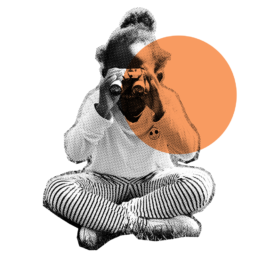
SHOOK thinks
We might not not go back to normal
In the rush back to normal, let’s try NOT to lose the opportunities in change
The last two weeks have been wall to wall back-to-the-office photos on my social feed. The consensus: it’s felt great, the train was pretty empty, hurrah for having an industrial-sized printer again.
In the (understandable) rush to get back to normal, it will be all too easy to lose the things people have been so far keen to keep. Flexible (over inflexible) working, performance over presenteeism, creative bravery over cautious bureaucracy.
During lockdown, work has been harder but more human. Many brands have been quicker, braver, kinder. Community spirit has thrived. People have rediscovered what matters to them.
These changes started because we were in the rarely-seen situation of pretty much EVERYONE living through the same epiphany moment at the same time: I need to stay home and save lives. Nobody wasn’t working from home who could. Everyone had a sense of urgency to support each other. Zooms elbowed conference calls into touch. Unusual times oiled unusually quick decisions.
As our epiphany (lockdown) eases, the impetus to keep up the changes that proved positive will ease off. As our context changes back, so will our behaviour. As we see more people returning to the way things were, we’ll feel a duty to follow suit. Going back to old routines will squeeze the new ones out.
If there are positives we want to keep, it won’t happen by magic or even motivation. Especially as the industry and the world faces down the tough coming months, we need to understand how to turn temporary behaviours forced by circumstance into the permanent positive habits we want to keep. These changes won’t stay otherwise: because new habits happen by design, not desire.
How will it happen? The first step is to be clear on what you want to do, not just dream of. The next steps are to make these actions part of culture or routine; to make them easier; to make sure they’re prompted. It’s a simple, proven process but one that needs action, not just aspiration, and that can be rare to come by.
This goes as much for brands as it does for individuals. How can you help people continue positive behaviour, such as the return to hands-on hobbies or more scratch cooking? At-home exercise or a new obsession with plant-buying? How can you re-design your offer to suit changing shopping habits (EY data shows 64% of people expect to shop less but spend more in the next few years)? How can you help continue the positive family bonding people reported in Rare’s research? What can you do?
It would be understandable for the ‘new normal’ so many have waxed lyrical about to be filed under C for COVID and forgotten as we rush to overcome the impact of all the negatives. For us all to slip back into the same old way of doing things. But we believe there’s real opportunity there – for people, positive habits and profits – to look at how some of the new behaviours can be continued. That’s got to be worth doing something about.
If you’d like to talk more about how this thinking could help your brand, get in touch: hello@welcometoshook.com
Thoughtpiece by Gemma Moroney, co-founder

